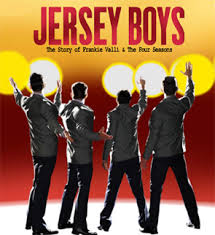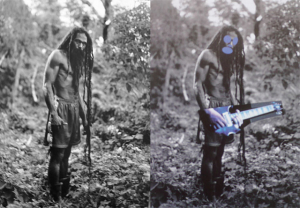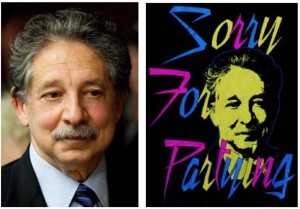I’ve written about Fair Use before (to see some of my previous posts on the topic, check out my blog’s handy new search function.) The hottest topic in fair use these days is, without question, the copyright transformative use issue. What does it mean to say the use of someone else’s copyrighted work is “transformative,” and how are the courts ruling on this topic?
As a review, the Fair Use doctrine provides a defense to claims of copyright infringement. The statute reads:
17 USC 107. Notwithstanding the provisions of sections 106 and 106A, the fair use of a copyrighted work, including such use by reproduction in copies or phonorecords or by any other means specified by that section, for purposes such as criticism, comment, news reporting, teaching (including multiple copies for classroom use), scholarship, or research, is not an infringement of copyright. In determining whether the use made of a work in any particular case is a fair use the factors to be considered shall include—
(1) the purpose and character of the use, including whether such use is of a commercial nature or is for nonprofit educational purposes;
(2) the nature of the copyrighted work;
(3) the amount and substantiality of the portion used in relation to the copyrighted work as a whole; and
(4) the effect of the use upon the potential market for or value of the copyrighted work.
The fact that a work is unpublished shall not itself bar a finding of fair use if such finding is made upon consideration of all the above factors.
The issue of transformative use relates to the first (and, typically, most important) factor, the Purpose and Character of the Accused Use. Recent cases have focused on this factor and honed in on the question of whether the use is “transformative.” The state of the law seems to be that if a court finds a work to be transformative, it’ll qualify for fair use protection. From Dhillon v. Does 1-10, 2014 WL 722592 (N.D. Cal. Feb. 25, 2014):
Whether a use is transformative depends upon whether the new use “supersede[s] the objects of the original creation,” or instead, serves a new purpose…Even making an exact copy of a protected work may be transformative, provided “the copy serves a different function than the original work.”
And now, on to some recent cases of note that addressed the “transformativeness” issue:
The Jersey Boys Case

A seven-second clip from the Ed Sullivan TV was used in a staged musical history (“The Jersey Boys”) based on the career of the musical group, the Four Seasons. The use was transformative (“Being selected by Ed Sullivan to perform on his show was evidence of the band’s enduring prominence in American music,” the judge wrote in the ruling. “By using it as a biographical anchor, [the defendant] put the clip to its own transformative ends.”) Further, the use caused no financial harm to the copyright owners of the show. SOFA Entertainment, Inc. v. Dodger Productions, Inc., No. 2:08-cv-02616 (9th Cir. Mar. 11, 2013).
The Richard Prince Rasta Art Case

The painter, Richard Prince, created a collage using — in one collage — 35 images from a photographer’s book. The original images were of rastafarians in Jamaica. The artist also used 28 of the photos in 29 additional paintings. In some instances the full photograph was used while in others, only the main subject of the photo was used. The Second Circuit Court of Appeals held that to qualify as a transformative use, Prince’s work did not have to comment on the original photographer’s work (or on popular culture). The Court of Appeals concluded that twenty-five of Prince’s artworks qualified as fair use and remanded the case to determine the status of the remaining five artworks. Cariou v. Prince, U.S. Court of Appeals for the 2nd Circuit, No. 11-1197.
The “Sorry for Partying” Case
This is the most recent notable fair use case. In 2012, Madison, Wisconsin Mayor Paul Soglin tried to shut down an event called the Mifflin Street Block Party, the theme of which was “taking a sharp stick and poking it in the eye of authority.” Soglin had attended the first Mifflin Street Block Party in 1969. The defendant sold products using a modified image of Mayor Soglin with the text “Sorry For Partying.” Here are the images:

Photographer Michael Kienitz sued for copyright infringement. The Seventh Circuit Court of Appeals (there they are again) held that the use was fair, noting that “[t]he photograph was posterized, the background was removed, and Soglin’s face was turned lime green and surrounded by multi-colored writing.” However, the Seventh Circuit was openly critical of the Second Circuit’s “transformative” approach, stating:
We’re skeptical of Cariou’s approach, because asking exclusively whether something is “transformative” not only replaces the list in §107 but also could override 17 U.S.C. §106(2), which protects derivative works. To say that a new use transforms the work is precisely to say that it is derivative and thus, one might suppose, protected under §106(2). Cariou and its predecessors in the Second Circuit do not ex-plain how every “transformative use” can be “fair use” without extinguishing the author’s rights under §106(2)…We think it best to stick with the statutory list, of which the most important usually is the fourth (market effect). Kienitz v. Sconnie Nation LLC (7th Cir. Sept. 14, 2014).
We now have an open circuit split on the transformative use inquiry. Will the Supreme Court step in to resolve this issue? Copyright lawyers, as well as actual regular people who want to know how they are able to make use of expressive works, are waiting to see.
Note – this post is an adaptation of a talk I gave at Thomas Jefferson School of Law on November 7, 2014.

